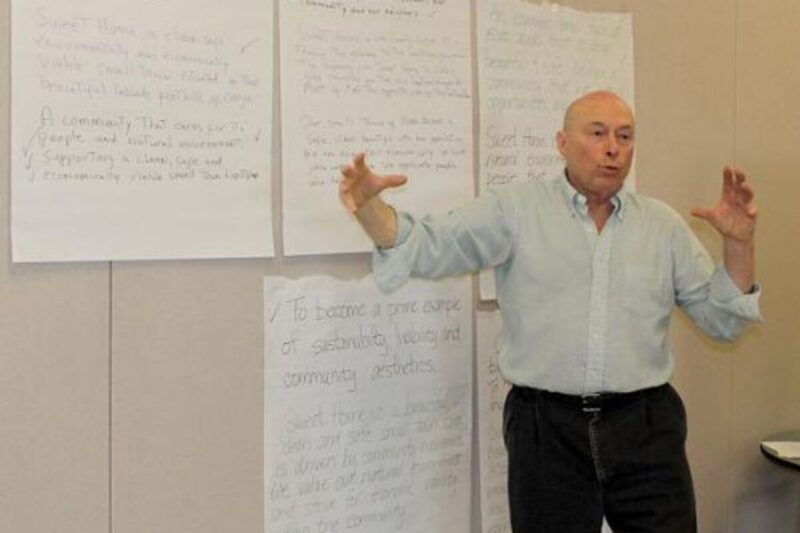Sean C. Morgan
Some 15 Sweet Home residents gathered Friday and collaborated to create one sentence that are meant to define a vision for Hobart Natural Preserve Park and the community for the next 50 years and guide the creation of goals to implement the vision.
We’ve got the preliminary draft of a mission statement done,” said city Community Development Director Carol Lewis. It will be available for wordsmithing and developing goals, including those things we want to pursue that meet the mission, “things we have to take care of and things we want to care of.”
The residents met with city staff and consultant Chris Maser Friday evening to discuss what they like about Sweet Home and where they would like to see the community go.
They spent about three hours distilling several ideas and proposed statements into a single sentence.
The result of the day’s work was the following statement: “Sweet Home is a community where we live in harmony with the surrounding environment, supporting a clean, safe and economically viable small-town lifestyle for the benefit of present and future generations.”
That proposed vision statement will be sent to interested parties and returned with comments for further refinement and revision at the next meeting, 4 to 8 p.m. on May 17 followed by a final meeting from 10 a.m. to 4 p.m. on May 18 at the Jim Riggs Community Center.
The city is developing a master plan for Hobart Park, a way for the community to use the park while protecting three species, including the endangered Bradshaw’s lomatium and the threatened bugbane, a perennial herb from the buttercup family, and Methuselah’s beard, a lichen.
Out of the planning process for the park, the city is developing a new vision statement and community goals to achieve the vision.
Goals for Hobart Park will be a part of the completed document, Lewis said. The grant funding the process requires a plan for Hobart Park.
It’s an opportunity to define the community and the small-town values its people want to preserve, Maser said. That could be a place where the community comes together.
In less developed countries where Maser has worked, he said, the streets are places people will meet.
There would a place where people would gather, the kids would play,” Maser said. In Mexico, it was a post office.
As towns get bigger and bigger, that disappears, he said. If it gets too big, “you lose cultural capacity.”
It’s irreversible once it’s lost, he said. The community fragments, “and you don’t get it back.”
In discussion about how to phrase “surrounding environment,” Maser explained that humans are part of nature. “We are inseparable from the natural environment. We cannot get away from it.”
People are surrounded by an environment, and they take care of it. The environment nurtures the humans. Destroying it changes communities.
You’re cradled by nature,” he said. “That’s your wealth,” clean water, clean air and open space.
For more information about the planning process, contact the Community Development Department at (541) 367-8113 or stop by the department at City Hall, 1140 12th Ave.





